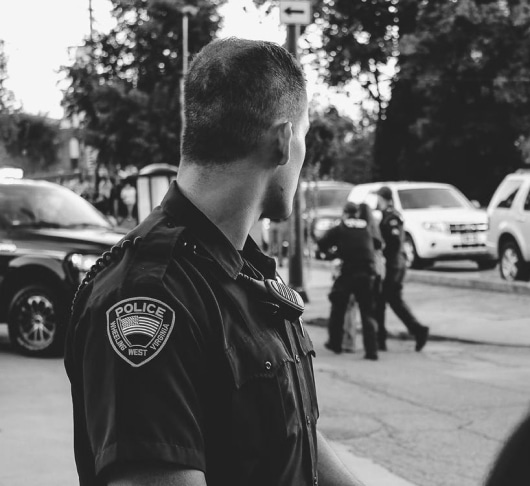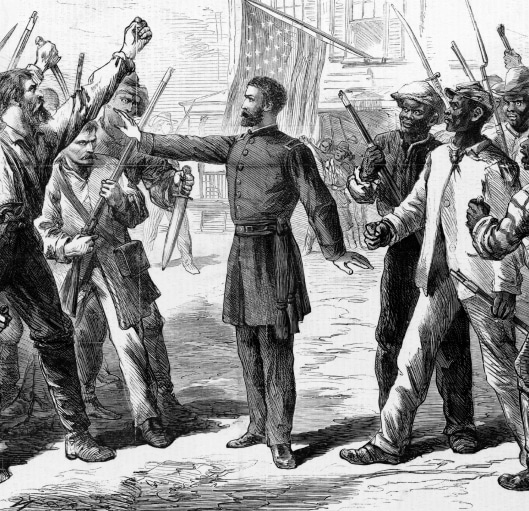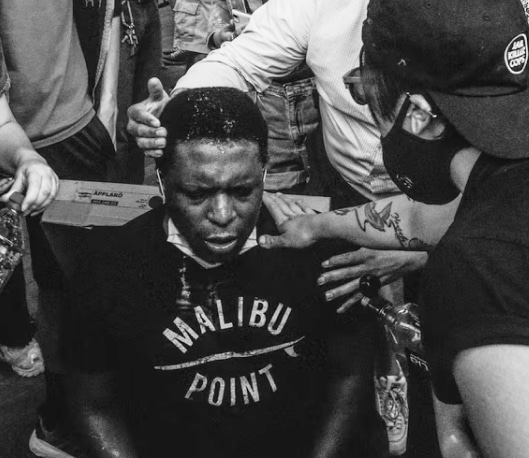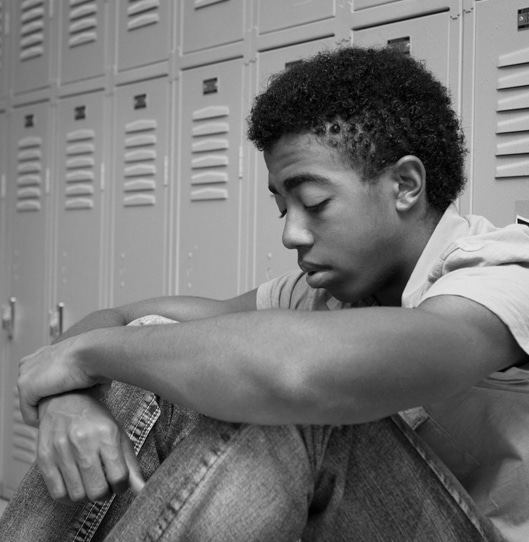What Is Racial Profiling?
Were you or a loved one a victim of police brutality?
Attorneys that work with Police Brutality Center may be able to assist you.
"*" indicates required fields
Content Last Updated: March 3, 2025
Racial profiling, also called ethnic profiling, is a discriminatory practice by law enforcement officials. In racial profiling, law enforcement officials target individuals as suspects in a crime based on the individual’s race, ethnicity, religion, or national origin, according to the American Civil Liberties Union. For example, a police department might use race to determine who to stop for minor traffic offenses or jaywalking. Racial profiling is at play when immigration enforcement officials target Asian, Middle Eastern, or Muslim immigrants for detention without any evidence that these individuals have committed crimes.
The courts don’t consider a traffic stop to be racial profiling if police have probable cause to make the stop. It is also not considered racial profiling if the person fits a complete description of a crime suspect, such as “Hispanic male, 5 feet 9 inches tall, wearing blue jeans and a red T-shirt and high-top red Nike sneakers.”

For purposes of determining whether racial profiling has occurred, law enforcement can include local and state police and federal law enforcement in all agencies.
Racial profiling also refers to instances when law officers refuse to act to prevent crimes solely based on race, such as when police fail to respond to reports of violence against Black families in a white neighborhood or prevent the lynchings of African-Americans.
Racial profiling is a fact of life. More than half of the Black men in the United States told a Pew Research Center survey that police have stopped them unfairly. About 31% of African-American women say police have unfairly stopped them. The darker a person’s skin, the more often they experience profiling.
A 2021 Pew Research Center study revealed that 16% of Hispanic adults who have darker skin reported that they had “been unfairly stopped by police” in the 12 months prior to March 2021, as opposed to 8% of those with lighter skin.

A History of Racial Profiling
Racial profiling has existed as long as police departments and people of color have co-existed in the United States. It gained public attention in the 1990s with a New Jersey court case, State v. Pedro Soto, 734 A.2d 350 (N.J. Super. Ct. Law Div. 1996.) Evidence in the case showed that drivers of color were stopped for traffic violations on the New Jersey Turnpike at a much greater rate than white people. Based on that evidence, the judge ruled that state police had been illegally targeting African-Americans on the turnpike for years.
A similar case also occurred in Maryland with the same result. Wilkins v. Maryland State Police, Civil No. MJG-93-468 (D. Md., 1993) featured another study. The study found that only 17% of the interstate driving population in Maryland were Black, but 72% of those stopped were Black.
Another famous case subjected stop-and-frisk police practices to scrutiny. In Terry v Ohio, 391 U.S. 1 (1968), the court held that stop-and-frisk searches, which were linked to widespread racial profiling and harassment, must be warranted to be legal.
In New York, Judge Shira A. Scheindlin also held that New York City’s stop-and-frisk policy was a violation of the equal rights clause of the 14th Amendment.

What is the difference between racial profiling and criminal profiling?
Racial profiling relies on stereotypes about race, color, ethnicity, ancestry, or religion—rather than on a reasonable suspicion—”to single out an individual for greater scrutiny or different treatment,” according to the Ontario Human Rights Commission.
On the other hand, criminal profiling relies on actual behavior or information about suspected activity by someone who meets a description of a suspect.
Courts have held that racial profiling is a violation of the equal rights clause of the 14th amendment to the Constitution. Criminal profiling is legal, and law enforcement agencies use it to investigate crimes.
Why is it hard to prove racial profiling?
Proving racial profiling typically requires the use of statistics. In general, courts use two tests.
The first is benchmarking, which compares the percentage of police stops of those of a specific race with the percentage of that race within the geographic area. The challenge is deciding which data to use to determine the percentage of race. Often census data is old or misleading. Also, census data accounts only for residents of a particular city, not the number of people who pass through the area.
A second test is the hit rate, or the number of stops that actually unearth criminal activity. If statistics show that officers are finding little evidence of illegal activity in searches of one ethnic group, the searches may be considered racial profiling. However, if the statistics show a high hit rate, the courts may consider the searches legal, regardless of whether race was a factor.
Another difficulty in proving racial profiling lies in local police departments patrolling high-crime areas, which often have a high percentage of minorities. The police department can argue that its high number of traffic stops or stop-and-frisk incidents is related to the level of crime rather than race.
Impact of Racial Profiling on the Community
Racial profiling negatively impacts the community in several ways. First, it confirms community feelings of racism and the fear of those who are different. It denies the community the full gifts of all its citizens because victims of profiling feel disempowered. It also strongly affects the classmates, neighbors, friends, and families of the victim.
Finally, racial profiling erodes public confidence in law enforcement agencies and other institutions. In an Ontario Human Rights Commission survey, minorities described feeling suspicious, distrustful, angry, antagonistic, hostile, and afraid of law enforcement officers.
Rather than feeling that police officers are protecting them, many members of minority ethnic groups said they felt the need to be protected from the police.
Impact of Racial Profiling on the Victim
Some victims of racial profiling receive only a traffic ticket or are inconvenienced by being taken to the police station for no reason. For others, however, racial profiling results in death or serious injury. Still, others lose their jobs as a result of racial profiling that leads to false arrests, according to an NPR article.
For example, the ACLU cites the 2001 case of Timothy Thomas, an unarmed 19-year-old African-American man with various nonviolent misdemeanor warrants who was shot and killed while running away from police in Cincinnati. The police officer who shot Thomas, John Roach, faced charges of negligent homicide and obstructing official business, but the judge acquitted him in a bench trial.
The Ohio ACLU issued a press release stating, “The strife that has grown from the death of Timothy Thomas is a clear indication of the way in which racial profiling, over-policing, and a breakdown in communications between the police and the community can tear a city in two.”


The ACLU of Ohio and a community coalition sued the city and the Fraternal Order of Police, alleging a pattern and practice of racial discrimination by the police department. The parties negotiated a settlement that included establishing a civilian complaint review board. The U.S. Department of Justice also sued, settling when the city revised its use of force policy.
Racial profiling is a challenge to human dignity, and many of its victims also face emotional, psychological, mental, and financial difficulties, according to the Ontario Human Rights Commission. In one study, many people described feelings of helplessness and hopelessness. Others reported having nightmares and experiencing suicidal thoughts. Several participants reported seeing or having their child see a psychologist or therapist to cope with the mental aftermath of racial profiling.
Some victims experience post-traumatic stress disorder (PTSD) as a result of profiling. The effects are particularly devastating to children and young people, according to the Commission. Individuals who have immigrated to the United States from dictatorships or authoritarian governments also find racial profiling to be particularly difficult because they have flashbacks to experiences in their previous environment.
Many victims develop complex coping strategies to deal with the profiling. For example, the father of an African-American teenager may put a more rigid curfew on his son than the father of a white teen, for fear that the teen will be a racial profiling victim.
Some studies also link racial profiling with a higher incidence of certain diseases among minority groups. For example, one study found a link between chronic stress from frequent racist encounters and chronic low-grade inflammation.
Our team at the Police Brutality Center understands how devastating racial profiling can be. We also understand the laws surrounding racial profiling. We will advocate for you so that you can receive the compensation necessary to begin to heal from these experiences. We also strive to help find ways to end racial profiling. If you or a loved one is a victim of racial profiling, we may be able to connect you with a police brutality lawyer to discuss your legal options.

